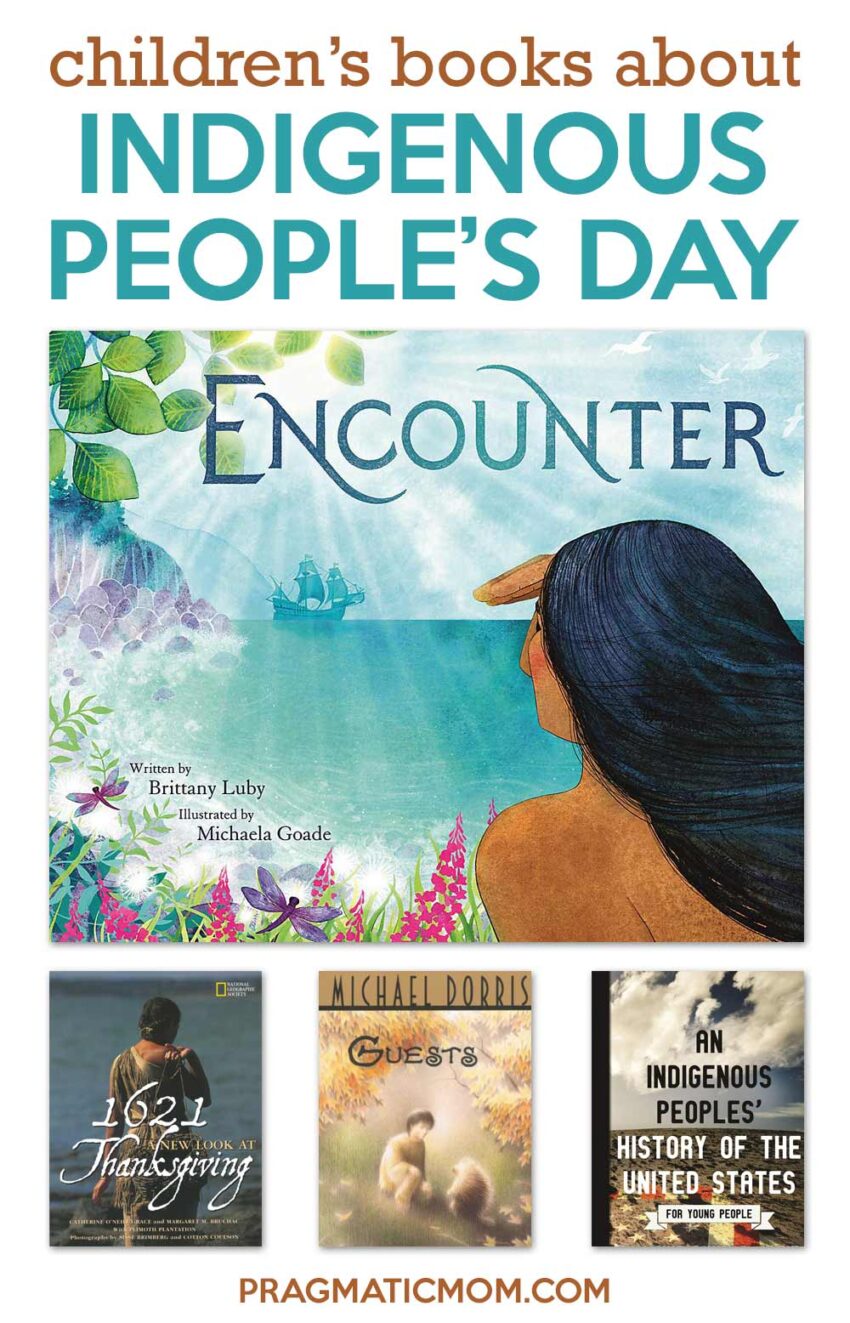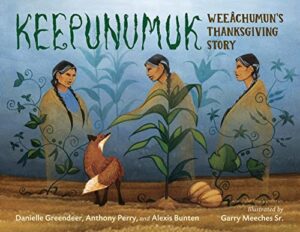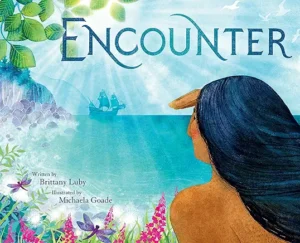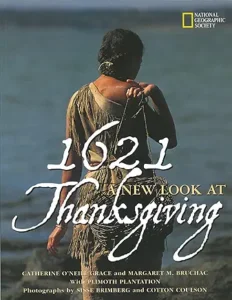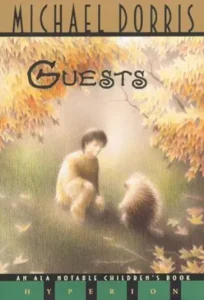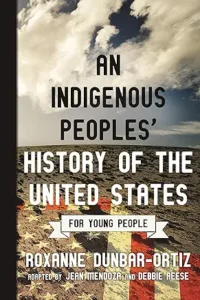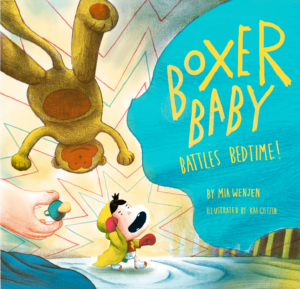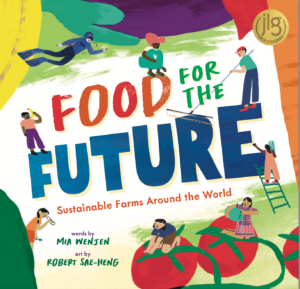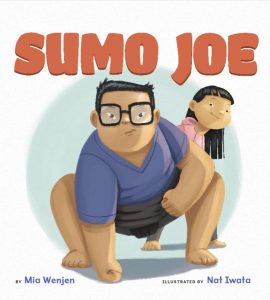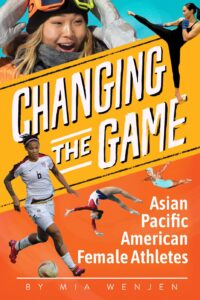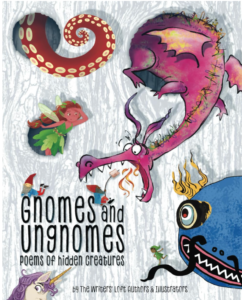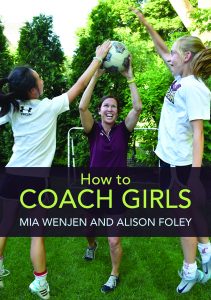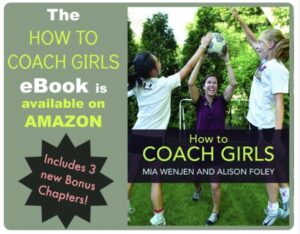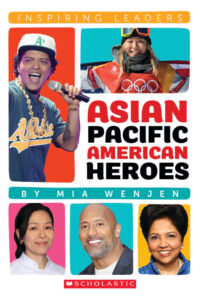It comes up every year: what are the “good” books for Thanksgiving and Indigenous Peoples Day? It’s not simply a question of #OwnVoices but historical accuracy from multiple points of view. It’s much easier to celebrate a narrative that eliminates conflict and genocide. In searching for books over the past few years, these are the books that I’ve found and can recommend.
What books would you add to the list? Thanks for sharing on this politically charged topic.
5 Children’s Books for Indigenous Peoples Day
Keepunumuk: Weeâchumun’s Thanksgiving Story by Danielle Greendeer, Anthony Perry, and Alexis Bunten, illustrated by Garry Meeches, Sr.
Keepunumuk tells the American Thanksgiving story from a Native American point of view. Created by an all-Native team, this book tells the Thanksgiving story through the eyes of the Three Sisters: Corn, Beans, and Squash. It reminds readers that we as people are part of the world around us, and rely on Nature–and each other–to thrive. It also creates a new, more inclusive Thanksgiving story to unite a divided country. [picture book, ages 4 and up]
Encounter by Brittany Luby, illustrated by Michaela Goade
Author Britanny Luby is of Anishinaabe descent and a professor of history at the University of Guelph in Canada. She is also a direct descendent of Chief Kawitaskung who signed The North-West Angle Treaty of 1873. Michaela Goade is an award-winning illustrator of Tlingit descent. Together, they have imagined a scenario of when two very different people meet and it’s told like a folk tale in an oral tradition.
The back matter provides information for discussion about multiple points of view when learning and writing about history. This story is based on notes from Jacques Cartier, a French explorer who anchored his ship in Gaspe Bay in 1534. It’s a reminder that the indigenous people inhabited North America long before Europeans arrived and that every encounter has the potential for mutual respect.
This imagined story about a peaceful encounter also mirrors historical records and gives food for thought about boundaries, ownership, and colonialization. [picture book, ages 4 and up]
1621: A New Look at Thanksgiving by Catherine O’Neill Grace and Margaret Bruchac with Plimoth Plantation, photographs by Sisse Brimberg and Cotton Coulson
Drawing on the research of scholars and the Wampanoag people themselves, this book is an effort by the Plimoth Plantation Museum to reinterpret the people and events of the 1621 harvest feast from the mythology of peaceful settlers inviting Indians over for dinner to a more balanced account of what took place.
Background information includes the Wampanoag’s history of living for thousands of years in present-day Massachusetts before European settlement.
Historically accurate recipes for Nasaump, a traditional Wampanoag dish, and Stewed Pompion, from the 1672 book New England Rarities Discovered, are included. [nonfiction picture book, ages 8 and up]
 Guests by Michael Dorris
Guests by Michael Dorris
Moss, a young boy, doesn’t understand why his father would invite outsiders to their harvest meal. He is grappling with growing up, impatient to become a man because he is tired of being treated like a boy.
Still, after the coughing sickness, he is the only child who survived in his family. Trouble, a girl who understands him, also has issues at home.
When they return from an adventure in the woods, they join the strangers at their harvest meal who don’t speak their language but still manage to convey bad manners by not bringing gifts and asking for a second celebration at their location to be provided by Moss’s people.
The stories told that night are incomprehensible to their guests but the theme is about ingratitude. After the meal, Moss wonders about who he is and what the future holds. [middle grade, ages 9 and up]
An Indigenous Peoples’ History of the United States for Young People by Roxanne Dunbar-Ortiz, adapted by Jean Mendoza and Debbie Reese
Spanning more than 400 years, this classic bottom-up history examines the legacy of Indigenous peoples’ resistance, resilience, and steadfast fight against imperialism.
Going beyond the story of America as a country “discovered” by a few brave men in the “New World,” Indigenous human rights advocate Roxanne Dunbar-Ortiz reveals the roles that settler colonialism and policies of American Indian genocide played in forming our national identity.
The original academic text is fully adapted by renowned curriculum experts Debbie Reese and Jean Mendoza, for middle-grade and young adult readers to include discussion topics, archival images, original maps, recommendations for further reading, and other materials to encourage students, teachers, and general readers to think critically about their own place in history. [young adult, ages 12 and up]
Related posts:
Delivering Thanksgiving Dinner to the Elderly: Our Hasbro Kindness Project
Teaching Gratitude to Kids with Thanksgiving Books
Books for Kids to Celebrate Native American Heritage Month
A Selection of #OwnVoices Native American Stories
Native American Residential Schools #OwnVoices Book List
#OwnVoices Powwow Picture Books
Native American Folklore & Creation Stories by Native Americans
Top 10: Best Native American Books for Kids
Native American Book Lists For Kids
Books for Kids to Celebrate Native American Heritage Month
Plimoth Plantation: Learning About Native Americans
Contemporary Native Americans in KidLit
Native American Picture Book of the Day Exploration
To examine any book more closely at Amazon, please click on image of book.
As an Amazon Associate, I earn from qualifying purchases.
Follow PragmaticMom’s board Multicultural Books for Kids on Pinterest.
Follow PragmaticMom’s board Children’s Book Activities on Pinterest.
My books:
Food for the Future: Sustainable Farms Around the World
- Junior Library Guild Gold selection
- Selected as one of 100 Outstanding Picture Books of 2023 by dPICTUS and featured at the Bologna Children’s Book Fair
- Starred review from School Library Journal
- Chicago Library’s Best of the Best
- Imagination Soup’s 35 Best Nonfiction Books of 2023 for Kids
Amazon / Barefoot Books / Signed or Inscribed by Me

